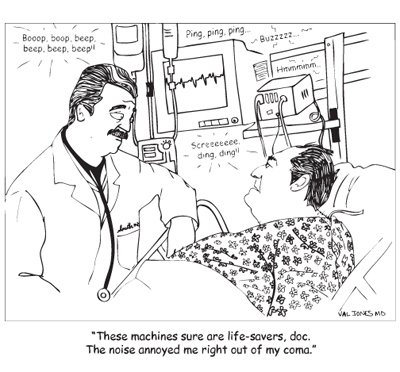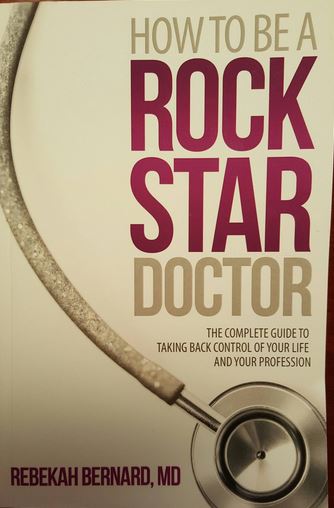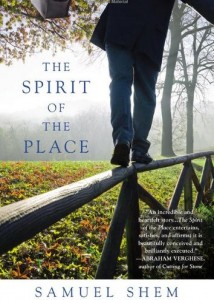August 11th, 2011 by IsisTheScientist in Health Policy, Opinion
No Comments »

A friend sent me a press release a few days ago and I still find myself thinking about it. Here in the United States capital punishment is still legal in many states and is performed, frequently, by lethal injection. Prisoners sentenced to death have an IV placed in their arm which is then infused with the following three solutions:
- A barbiturate like Sodium Pentothal or Nembutal, used to induce anesthesia
- A paralytic like pancuronium bromide or succinylcholine chloride, used to stop respiration
- Potassium chloride used to stop electrical conduction in the heart
I remember a few years ago drug manufacturer Hospira, the producer of Sodium Pentothal, issued a statement that it disapproved of its drug being used in capital punishment. But, that was as far as their opposition went and, although Sodium Pentothal is in short supply, they have not to my knowledge formally discontinued supplying Sodium Pentothal to doctors who might use the drug in lethal injection. In 2010, the supply of Sodium Pentothal became limited and several states made the switch to Nembutal.
In response, Lundbeck, the producer of Nembutal, has issued a statement saying that they will no longer provide Nembutal to prisons in states where lethal injection is legal. In this press release Lundbeck announces its new distribution system, saying: Read more »
*This blog post was originally published at On Becoming a Domestic and Laboratory Goddess*
August 10th, 2011 by AnneHansonMD in Opinion
No Comments »


 I’ve always been struck by the similarity between solitary confinement inmates and monks. Historically, monks were kept under the vow of silence. They could only leave their cells to attend religious services. The only visitors they were allowed tohave were their religious advisors. (If any of you have seen the movie Into Great Silence you’ll know what I’m talking about.) The idea of the modern penitentiary came from this ‘penitence’ process: put someone in a room by himself, give him religious guidance while he’s there and he’ll reflect, repent and reform. This was how prisons were run in the Nineteenth Century too: prisoners were kept under the rule of silence and they could only come out of their cells for religious services or for work. No one ever alleged that monks became psychotic because of this though.
I’ve always been struck by the similarity between solitary confinement inmates and monks. Historically, monks were kept under the vow of silence. They could only leave their cells to attend religious services. The only visitors they were allowed tohave were their religious advisors. (If any of you have seen the movie Into Great Silence you’ll know what I’m talking about.) The idea of the modern penitentiary came from this ‘penitence’ process: put someone in a room by himself, give him religious guidance while he’s there and he’ll reflect, repent and reform. This was how prisons were run in the Nineteenth Century too: prisoners were kept under the rule of silence and they could only come out of their cells for religious services or for work. No one ever alleged that monks became psychotic because of this though.
Then there’s the psychiatric seclusion room. Again, a bare cell with a bed or a mattress, no visitors, no clothes except a hospital gown. There is no ‘vow of silence’ or ‘rule of silence’ though.
So what makes the difference between the prison segregation cell, the monk’s cell and the psychiatric seclusion room? Read more »
*This blog post was originally published at Shrink Rap*
June 25th, 2011 by AnneHansonMD in Health Policy, Opinion
1 Comment »




 From the New York Times today we have a story entitled, “A Schizophrenic, A Slain Worker, Troubling Questions,” a horrible story about a mentally ill man who killed a social worker in his group home. The story highlights the defendant’s longstanding history of violence with several assaults in his past. He once fractured his stepfather’s skull and his first criminal offense involved slashing and robbing a homeless man. (On another post on this blog Rob wondered why the charges were dismissed in that case; from experience I can tell you it’s probably because the victim and only witness was homeless and couldn’t be located several months later when the defendant came to trial.) The defendant, Deshawn Chappell, also used drugs while suffering from schizophrenia. Before the murder he reportedly stopped taking his depot neuroleptic and was symptomatic. The news story also suggested that he knew he was committing a crime: he got rid of the body, disposed of the car and changed out of his bloody clothes. Nevertheless, he was sufficiently symptomatic to be found incompetent to stand trial and was committed to a forensic hospital for treatment and restoration. At his competency hearing the victim’s family thought that the defendant was malingering his symptoms, while the victim’s fiance was distraught enough that he tried to attack Chappell in the courtroom. The point of the Times article appears to be an effort to link the crime to cuts in the Massachusetts mental health budget.
From the New York Times today we have a story entitled, “A Schizophrenic, A Slain Worker, Troubling Questions,” a horrible story about a mentally ill man who killed a social worker in his group home. The story highlights the defendant’s longstanding history of violence with several assaults in his past. He once fractured his stepfather’s skull and his first criminal offense involved slashing and robbing a homeless man. (On another post on this blog Rob wondered why the charges were dismissed in that case; from experience I can tell you it’s probably because the victim and only witness was homeless and couldn’t be located several months later when the defendant came to trial.) The defendant, Deshawn Chappell, also used drugs while suffering from schizophrenia. Before the murder he reportedly stopped taking his depot neuroleptic and was symptomatic. The news story also suggested that he knew he was committing a crime: he got rid of the body, disposed of the car and changed out of his bloody clothes. Nevertheless, he was sufficiently symptomatic to be found incompetent to stand trial and was committed to a forensic hospital for treatment and restoration. At his competency hearing the victim’s family thought that the defendant was malingering his symptoms, while the victim’s fiance was distraught enough that he tried to attack Chappell in the courtroom. The point of the Times article appears to be an effort to link the crime to cuts in the Massachusetts mental health budget.
So what do I think about this story? Read more »
*This blog post was originally published at Shrink Rap*
August 9th, 2009 by Toni Brayer, M.D. in Better Health Network, True Stories
No Comments »





I spent this morning on the “yard” at San Quintin Prison, playing tennis with the inmates. The prison has a tennis court, built right in the middle of the yard with hundreds of inmates shuffling about, shooting hoops, playing dominoes, working out or just milling about.
The guys who play tennis are a remarkable bunch. They are serious about their game, play whenever they can during the week and are really happy on Saturday morning when authorized “outsiders” come to play with them.
We play round robin; first team to 4 wins and a new foursome takes the court. They seem to have an understanding among themselves about who plays when. It is competitive but, believe it or not, very gentlemanly. Everyone is encouraging, with lots of high-fives and there is no cheating or bad line calls. The best part is when I am not playing, I am sitting on the bench with the guys, just chatting.
The tennis players in San Quintin are without attitude or posturing. Some do yoga or go to school. Some work in various prison jobs like making furniture, or stocking or cleaning cell blocks. Keep in mind some of these guys are there for life and they look pretty young to me.
In case you are thinking they have a soft life there, playing tennis and hanging out with civilians, think again. One guy showed me his lunch. It was 2 slices of white bread, a piece of bologna and mustard with a handful of corn chips. They can not receive gifts from the outside. If they have the money, they can order things from a catalog (tennis shoes, clothes, food items, personal supplies) every three months up to 30 lbs. There is no internet, no ipods, no electronics, no cable TV.
People ask if I feel “safe” there and I must say I do. Certainly the tennis players are respectful and warm. The other prisoners in the yard watch us but keep a respectful distance and no-one has ever made a comment or shown any aggression. Of course there are 4 guard towers with guns pointed down at all times.
One of the tennis inmates told me this cell block is less troublesome and there is less gang activity or fighting. Most of them are long timers or even lifers. I was told that “Bert”, one of the guys I played with before was finally released after 23 years. I hope he is playing tennis on the outside.
For a look at how it is playing tennis in San Quintin, watch this.
*This blog post was originally published at EverythingHealth*





 I’ve always been struck by the similarity between solitary confinement inmates and monks. Historically, monks were kept under the vow of silence. They could only leave their cells to attend religious services. The only visitors they were allowed tohave were their religious advisors. (If any of you have seen the movie
I’ve always been struck by the similarity between solitary confinement inmates and monks. Historically, monks were kept under the vow of silence. They could only leave their cells to attend religious services. The only visitors they were allowed tohave were their religious advisors. (If any of you have seen the movie 













